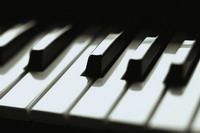Piano Sheets > Al Green Sheet Music > Put A Little Love In Your Heart (ver. 1) Piano Sheet
Put A Little Love In Your Heart (ver. 1) by Al Green - Piano Sheets and Free Sheet Music

About the Song
Other avaliable versions of this music sheet: Version 1 Version 2
"Put a Little Love in Your Heart" is a song originally performed by Jackie DeShannon in 1968, who composed it with her brother, Randy Myers, and Jimmy Holiday. In the US, it was DeShannon's highest-charting hit, reaching #4 and rivaling the success of her signature song, "What the World Needs Now is Love".
The song has been covered numerous times, although only one version was a charted hit in the US. In 1988 Al Green and Annie Lennox recorded a version that was released as the ending theme song to the 1988 film Scrooged. The song reached #9 in the US, and was a top 40 hit in several countries worldwide.
It has been pointed out[who?] that the melody is similar to that of "Baby, You're a Rich Man" by The Beatles. Albert Greene (born April 13, 1946), better known as Al Green, is an American gospel and soul music singer who received great acclaim in the 1970s. At the 2008 BET Awards Green was the.
Download this sheet!
About the Artist

Random article
Sheet music, theory and beyond When you take a look at a piano music sheet for the first time, all you will see is beautiful written characters which make absolutely no sense to you. And if you are a keen observer, you will notice that there are many types of circles associated with the piano music sheet language. Sheet music belonging to the instrument piano also consists of incomplete circles connected together by one or a collection of lines. Plus there are other symbols which will appear totally strange to you. So what are they all about and what do they mean? (More...)
